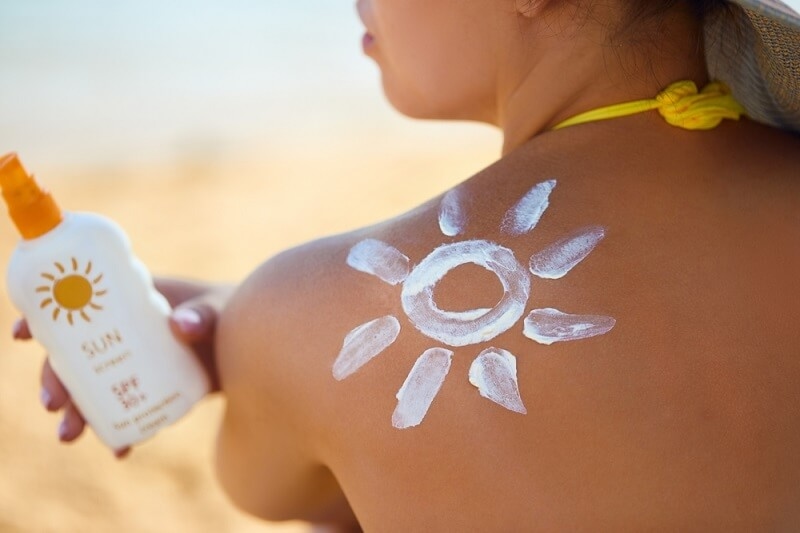
If there’s one thing everyone seems to agree on these days, it’s that sunscreen is non-negotiable. Whether it’s sunny, cloudy, or that weird kind of in-between weather, UV rays don’t exactly take a day off. Still, finding the right sunscreen can feel like a quest — too greasy, too chalky, too thick, or just plain uncomfortable. The trick is choosing a sunscreen for skin type that actually feels like something you want to wear, not something you have to.
Because let’s be honest — we’ve all skipped sunscreen a few times, right? Maybe you were running late, or it felt sticky under makeup. But here’s the thing: the sun doesn’t care if you’re “just going out for ten minutes.” Those few minutes add up, and that’s how wrinkles, dark spots, and dullness quietly settle in.
The right sunscreen can change your skin game completely. So, let’s talk about how to pick one that actually suits you.
Okay, now the important part. Sunscreen is not one-size-fits-all. What feels perfect on dry skin might make someone with oily skin feel like a glazed donut. So let’s break it down.
If your face starts shining by noon, look for lightweight or gel-based formulas. An oily skin sunscreen with words like “matte,” “oil-free,” or “non-comedogenic” on the label is your best bet. Zinc oxide helps too — it controls oil and fights breakouts.
Avoid thick creams or sunscreens heavy on fragrance. They’ll just clog pores. And yes, you still need moisturizer underneath. Hydrated skin produces less oil, weirdly enough.
Flaky skin and matte sunscreen are a disaster combo. You’ll want creamy or lotion-based formulas that feel nourishing. Look for hydrating ingredients like glycerin, hyaluronic acid, or ceramides. These help seal in moisture while giving you daily sun care that actually feels soothing.
If your skin tends to feel tight after washing, skip powders and gels. A richer texture will help keep your face soft and prevent that dull, dry look by noon.
Sensitive skin doesn’t like surprises. Stick to mineral sunscreen with zinc oxide or titanium dioxide. Avoid anything with alcohol, fragrance, or oxybenzone. Those are known irritants.
The best part about mineral formulas? They start working the moment you apply them. No waiting, no stinging. And while they can leave a slight white tint, newer ones now come in sheer or tinted versions that blend beautifully.
When your T-zone is shiny but your cheeks are dry, it’s tricky. Try a lightweight lotion or gel-cream hybrid. These balance moisture and oil without overdoing either. Hybrid sunscreens — the ones that mix chemical and mineral filters — are a good middle ground.
Look for labels that mention “balanced hydration” or “oil-control hydration.” They’ll keep your skin comfy all day.
If you’ve ever hated sunscreen because it left a ghostly white cast, you’re not alone. But thankfully, the newer generation of formulas — especially sheer mineral sunscreen and chemical ones — don’t do that anymore.
Look for words like “tinted,” “sheer,” or “invisible finish.” These blend seamlessly and even out your skin tone while offering solid UV protection. Everyone, regardless of melanin, needs sunscreen. Period.

We’ve all heard it before — sunscreen protects you from sunburn. True, but that’s only part of it. UV rays also cause long-term damage that sneaks up on you over the years. Even when you don’t see or feel it, those rays are still doing their thing, breaking down collagen, triggering pigmentation, and making your skin age faster than it should.
Good UV protection isn’t just about vanity. It’s health. It’s confidence. It’s your skin’s best defense against both premature aging and, yes, more serious risks like skin cancer.
And if you’re thinking, “But I’m indoors most of the time,” bad news — UVA rays can pass right through glass. So that cute little desk by the window? Not as innocent as it looks.
Let’s keep this simple. SPF stands for “Sun Protection Factor.” It basically measures how well a sunscreen protects you from UVB rays — the ones responsible for burning. SPF 30 filters about 97% of those rays, while SPF 50 blocks about 98%. Not a huge difference, right? What matters more is that you apply enough and reapply often.
That means a good dollop for your face — around half a teaspoon. And if you’re outdoors or sweating, reapply every two hours. The same goes if you’re swimming.
A higher SPF doesn’t mean you can skip reapplying; it just gives you a little more time before burning. Daily SPF protection around 30 is enough for most people — unless you’re hiking, beaching, or living somewhere the sun feels like an oven.
Here’s where people get confused. Chemical sunscreens absorb UV rays and convert them into heat. They’re lightweight, invisible, and easy to spread. Mineral sunscreen, also known as physical sunscreen, sits on your skin and reflects rays away using ingredients like zinc oxide or titanium dioxide.
Mineral ones are perfect for sensitive or easily irritated skin because they don’t sink in. The downside? They can sometimes leave a faint white cast (though newer ones blend way better now).
So, if your skin’s picky or you deal with redness, stick to mineral. If you prefer something invisible and smooth under makeup, go for chemical or even a hybrid formula that combines both.
Even the best sunscreen can’t help if you use it wrong. Here are a few habits to ditch:
And for the love of your skin, don’t stop using sunscreen in winter. The sun’s still out there, hiding behind those cozy clouds.
You might not feel it, but UVA rays pass through glass. So if you’re working near a window or driving a lot, those rays are still hitting your skin. They’re silent aging agents — no burns, just long-term damage.
There’s also the new concern: blue light from screens. Some modern sunscreens now offer protection against that too. It’s not about being paranoid — it’s about being smart.
The hardest part of sunscreen isn’t applying it. It’s remembering to. The trick is to make it part of something you already do. Keep it next to your toothbrush. Apply it right after moisturizer. Leave a travel tube in your bag or car.
Consistency beats perfection. Even the best sunscreen for skin type won’t work if it sits in your drawer half the time.
Wondering where sunscreen fits in your routine? Easy: it’s always the last step before makeup. Cleanse, tone, treat, moisturize — then sunscreen. Wait a minute or two before layering foundation or BB cream on top.
If you’re reapplying throughout the day, you don’t have to remove your makeup. Try powder sunscreens or mist formulas — quick touch-ups that actually work.
Your perfect SPF protection depends on how you live. If you’re outdoors often or play sports, go for water-resistant sunscreen with SPF 50. If you’re mostly indoors, SPF 30 is enough.
And yes, men need sunscreen too. No, it’s not “just for women.” Everyone benefits from daily sun care — because UV rays don’t discriminate.
Let’s tackle a few lies we’ve all heard:
Choosing sunscreen shouldn’t feel like a chemistry exam. It’s about finding one that works for your skin, your lifestyle, and your comfort. The best sunscreen for skin type is the one you’ll actually use daily — no excuses.
Whether you prefer lightweight gels, creamy lotions, or a trusty mineral sunscreen, make it part of your morning ritual. It’s not just skincare; it’s self-care. Because glowing skin isn’t about filters or facials — it’s about protection.
So tomorrow morning, before you step out (or even sit by that sunny window), grab your sunscreen. Your future self — smooth, youthful, and radiant — will thank you for it.
This content was created by AI